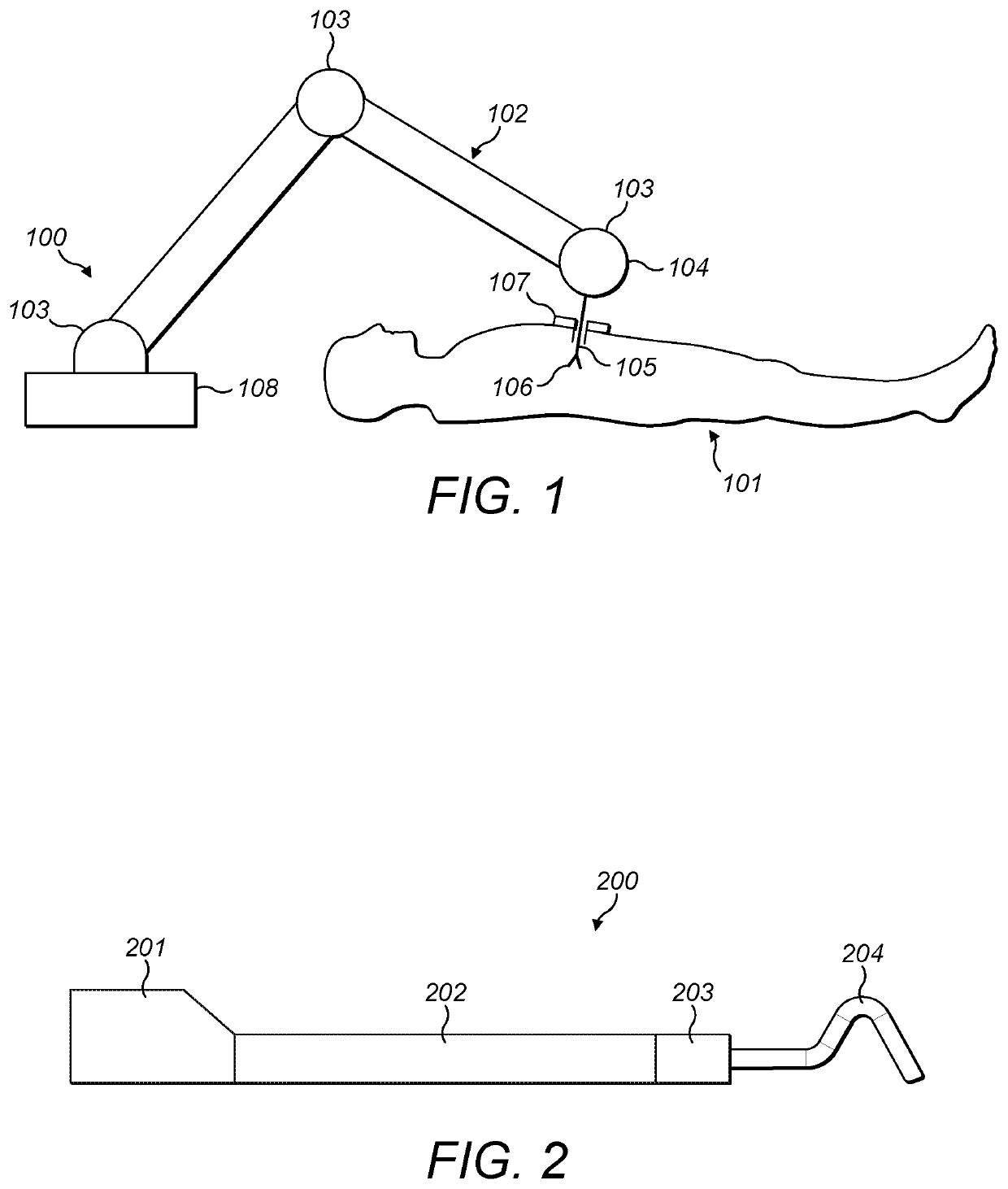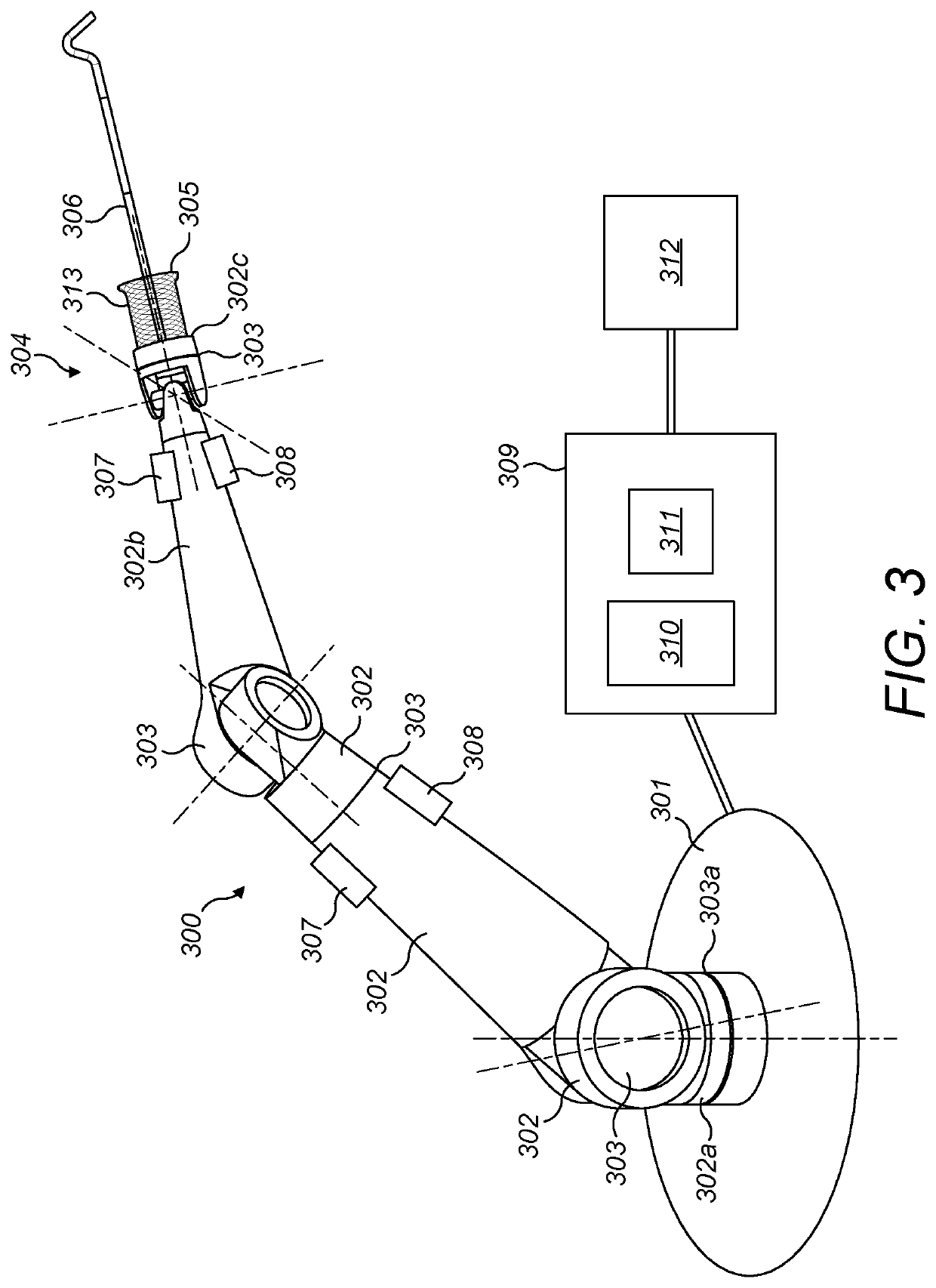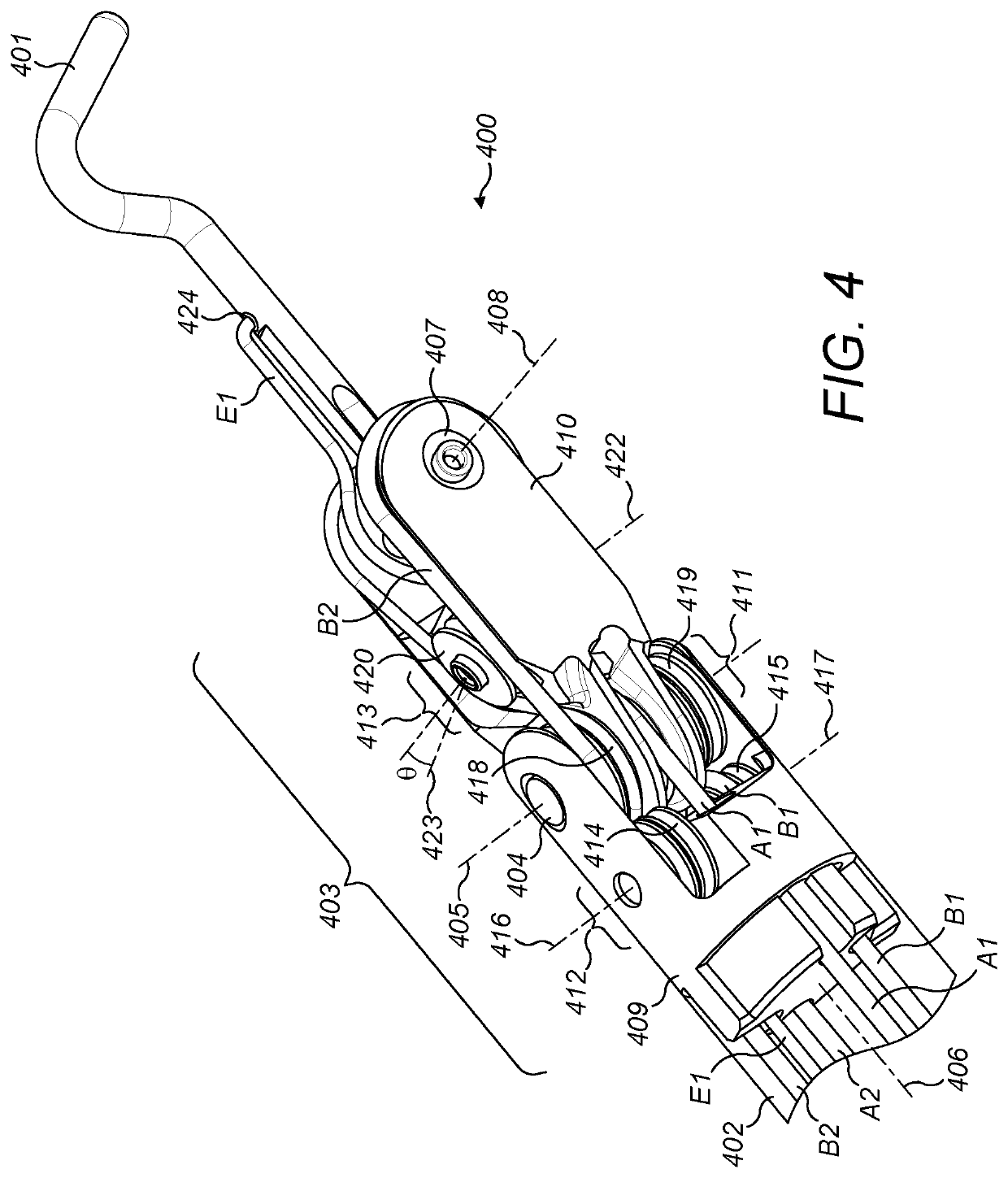Powering a bipolar electrocautery surgical instrument
a surgical instrument and power cable technology, applied in the field of powering a bipolar electrocautery surgical instrument, can solve the problems of affecting the operation efficiency of the power cable of the electrocautery instrument, and putting a lot of strain on the power cabl
- Summary
- Abstract
- Description
- Claims
- Application Information
AI Technical Summary
Benefits of technology
Problems solved by technology
Method used
Image
Examples
Embodiment Construction
[0035]FIG. 3 illustrates a surgical robot having an arm 300 which extends from a base 301. The arm comprises a number of rigid limbs 302. The limbs are coupled by revolute joints 303. The most proximal limb 302a is coupled to the base by joint 303a. It and the other limbs are coupled in series by further ones of the joints 303. Suitably, a wrist 304 is made up of four individual revolute joints. The wrist 304 couples one limb (302b) to the most distal limb (302c) of the arm. The most distal limb 302c carries an attachment 305 for a surgical electrocautery instrument 306. Each joint 303 of the arm has one or more motors 307 which can be operated to cause rotational motion at the respective joint, and one or more position and / or torque sensors 308 which provide information regarding the current configuration and / or load at that joint. Suitably, the motors are arranged proximally of the joints whose motion they drive, so as to improve weight distribution. For clarity, only some of the ...
PUM
 Login to View More
Login to View More Abstract
Description
Claims
Application Information
 Login to View More
Login to View More - R&D
- Intellectual Property
- Life Sciences
- Materials
- Tech Scout
- Unparalleled Data Quality
- Higher Quality Content
- 60% Fewer Hallucinations
Browse by: Latest US Patents, China's latest patents, Technical Efficacy Thesaurus, Application Domain, Technology Topic, Popular Technical Reports.
© 2025 PatSnap. All rights reserved.Legal|Privacy policy|Modern Slavery Act Transparency Statement|Sitemap|About US| Contact US: help@patsnap.com



